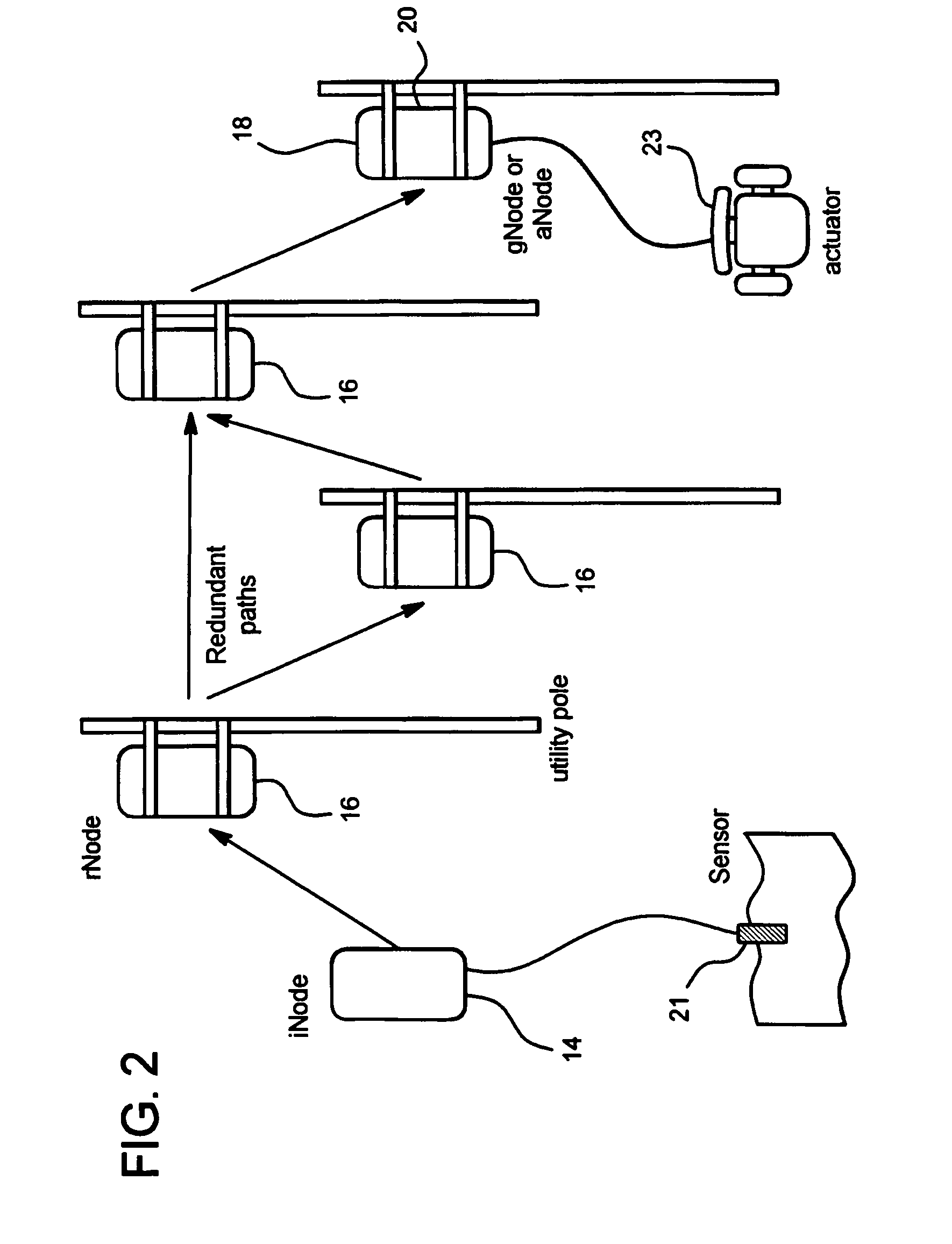Distributed monitoring and control system
- Summary
- Abstract
- Description
- Claims
- Application Information
AI Technical Summary
Benefits of technology
Problems solved by technology
Method used
Image
Examples
Embodiment Construction
[0023]FIG. 1 schematically illustrates a distributed monitoring and control system 10 for monitoring and controlling flow in a combined sewer system. As shown in FIG. 1, the distributed monitoring and control system 10 includes a plurality of intercommunicating nodes 12. In the distributed monitoring and control system 10 shown in FIG. 1, there are sensor nodes (iNodes) 14, routing nodes (rNodes) 16, actuator nodes (aNodes) 18 and gateway nodes (gNodes) 20. In the example shown in FIG. 1, the communication between the nodes 12 is achieved using a wireless transceiver in each of the nodes 12, as described further below. Although the preferred embodiment of the distributed monitoring and control system 10 described herein is a wireless system, it is contemplated that wired or hybrid (wired and wireless combination) communication may be utilized to accomplish the distributed monitoring and control system 10.
[0024]As shown in FIG. 2, the iNode 14 collects information from a sensor 21. T...
PUM
 Login to View More
Login to View More Abstract
Description
Claims
Application Information
 Login to View More
Login to View More - R&D
- Intellectual Property
- Life Sciences
- Materials
- Tech Scout
- Unparalleled Data Quality
- Higher Quality Content
- 60% Fewer Hallucinations
Browse by: Latest US Patents, China's latest patents, Technical Efficacy Thesaurus, Application Domain, Technology Topic, Popular Technical Reports.
© 2025 PatSnap. All rights reserved.Legal|Privacy policy|Modern Slavery Act Transparency Statement|Sitemap|About US| Contact US: help@patsnap.com



